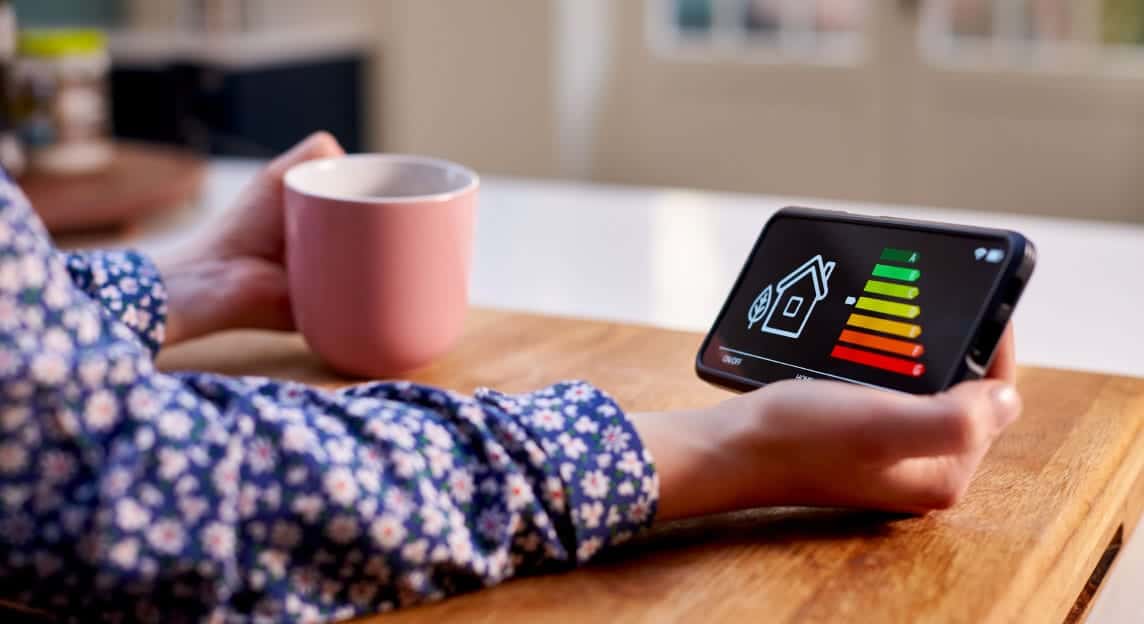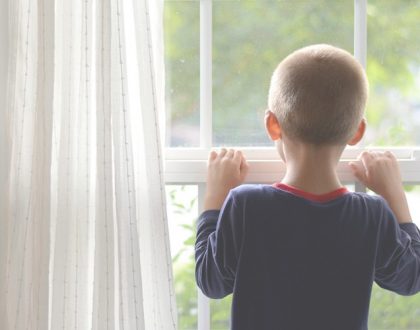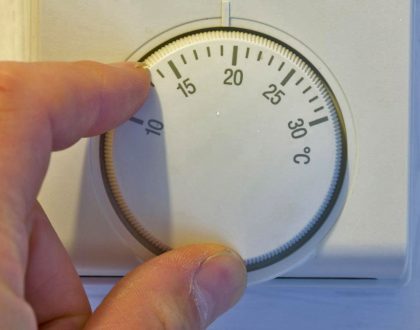12 Energy Saving Tips for 2023

It goes without saying that the cost-of-living crisis has hit hard. Vulnerable from the impact of the Covid-19 pandemic, the general population is weary and worried.
Focus has shifted from health fears to financial ones and it’s hard to make ends meet for a lot of people. Steep rises in energy prices are extremely concerning, with 92% of UK households, (as of January 2023), reporting an increase in their food and energy costs.
The only thing that seems to be decreasing is the amount of household disposable income, with forecasts from 2022’s autumn budget reporting a fall of 4.3%. This is the biggest drop in living standards since the mid-1950s.
With 2023 Energy Saving Week held recently in January, it is a good time to think about your energy consumption and the many ways that you can reduce costs in your home or business.
Read on for 12 tips to help you save money on your energy.
1. Use energy-efficient appliances
Look for the energy label on appliances to check how much energy they use. Appliances are classed from A-G, with A being the most energy efficient and G being the least. When choosing a new appliance, scanning the QR code on the label will tell you more about the product, so you are best informed about what will work for you.
Needless to say, investing in new appliances isn’t top of the list for saving money, but it’s worth considering if you happen to be replacing a washing machine, fridge or even TV in 2023.
2. Turn your thermostat down
Turning the temperature down by one degree is an incredibly simple but effective way of saving money. British Gas states that by doing this, a typical household could save £115 a year on average.
Changing the temperature on your combi boiler will also help with costs, as you may be heating your water hotter than it’s needed. 60°C is the recommended sweet spot in this respect.
3. Wash fuller loads on a lower setting
Washing machines and dishwashers are designed to work much more efficiently on full loads. Otherwise, you will waste energy and money. In daily use for washing machines and dishwashers, a lower setting (30°C/Eco) is fine and will get the job done just as well, saving money while it’s doing it.
4. Use smart technology
Even though using the word technology conjures up the idea of more electricity consumption, smart technology is actually designed to save energy. One of the main features of smart tech is sustainability and smart devices allow for adaptability to the costs of modern living.
Ways that smart tech can save you money include:
- Timed schedule for lights
- Voice activation to turn appliances on and off
- Smart meter to keep track of energy consumption
- Smart thermostat to control heating when you aren’t home
- Smart Leak Sensor to control your water usage
5. Use fans for cooling down
Ceiling or portable fans, use much less energy than an air conditioning unit. So, in those summer months when (or more likely, if) it’s hot, investing in a fan for your home is a sensible option. Depending on where you live, air conditioning may not be needed, so the air con investment could be a waste of time and energy!
6. Choose energy-saving lightbulbs
Halogen and incandescent bulbs use more energy, with 90% of incandescent bulb energy released as heat, rather than light. LED bulbs use much less energy and last a lot longer.
7. Unplug devices if not in use
Whether it’s a smartphone, hair straighteners or TV, leaving your devices plugged in or left on standby isn’t the best way to save energy. Your device will not last as long if it is constantly burning energy needlessly. This is called ‘vampire’ energy consumption, slowly drawing the energy and increasing your bills at the same time.
8. Go on the hunt for draughts
One of the simplest energy-saving tips is to track down any draughts in your home. Check around doors and window frames for any signs that heat could escape. You can keep heat in and draughts out using: door seals, self-adhesive strips, letterbox draught excluders and door thresholds. Or you can use the good old traditional, handmade draught excluder (usually in the shape of a sausage dog).
9. Don’t overfill the kettle
Be aware of how much water you boil as overfilling the kettle will waste energy. After you use the kettle, a good tip is to fill it to the amount of another few cups. The water will use the retained heat, saving energy the next time you boil it.
10. Change your shower head
Using a water-saving shower head that pumps air through alongside water, means that heat and water are reduced, cutting your costs. These are given for free by water companies, as each household is entitled to one free insulation and water-saving gadget. This is dependent on where you live and what is available, so check with your local water company to find out what you could be entitled to.
11. Using fleece-lined curtains
Changing the type of curtains you use can make a big difference in retaining heat in your home and keeping draughts from escaping. Fleece-lined curtains are excellent at absorbing the sun’s heat, which can then help heat the room when the curtains are closed later in the day.
12. Improve windows’ energy-efficiency
It is estimated that the amount of wasted heat through doors and windows each year is enough to heat up to 1.8 million homes for a whole year. The effectiveness of your windows and how well they are heating your home is an important energy-saving question.
Having single glazing or worn double-glazing brings draughts, noise and increased security risks. So, if you want to save energy and reduce heating costs, along with many other benefits – secondary glazing is the clear solution. The thermal efficiency of your windows will increase to around 60%-70%, and draughts will disappear.
Install energy-saving windows with Clearview
If you are looking for a high-quality, energy-saving measure, secondary glazing is the perfect solution. With over 20 years of industry experience, Clearview can help you choose the right, affordable products for your windows to help you to save energy and reduce bills.
If you’re ready to give it a try, contact the experts at Clearview and we’ll be happy to talk through your requirements

 10 Year Guarantee
10 Year Guarantee 5 Star Customer Reviews
5 Star Customer Reviews

